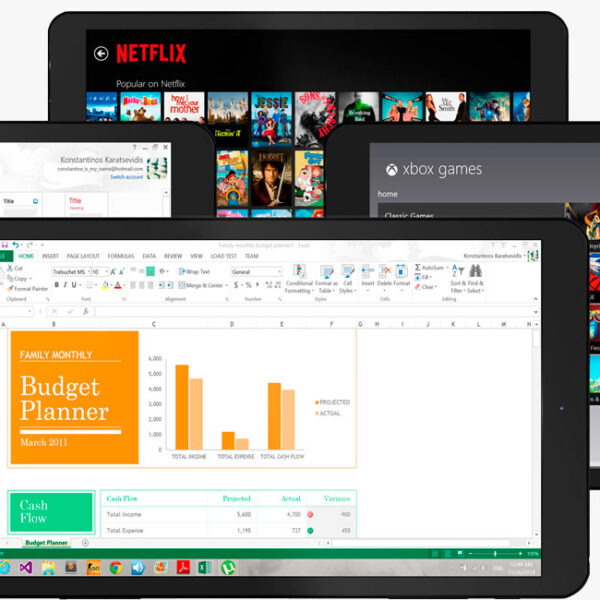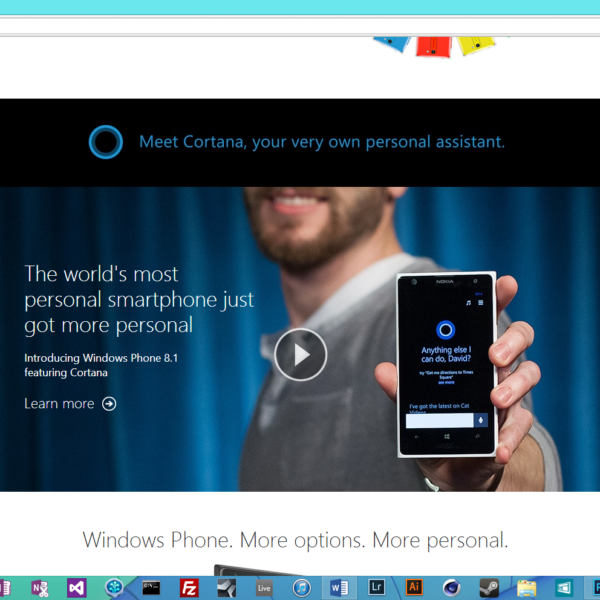Undoubtedly, the most important software on your computer is the OS, which determines your user experience and what applications you can run, therefore, knowing which OS to get is an important decision.
The three most commonly used OS in the world are Windows, macOS, and Linux. From these, Windows wins the market share by a whopping 90%, with macOS in second place, and Linux in third.
However, the popularity of a particular OS might not be the best indicator of its superiority. There are pros and cons attached to each of these operating systems, and which is the ‘best’ depends on the requirements of the user.
Let’s take a brief overview of each of the operating systems to get a better understanding.
Windows
Windows was first introduced in 1985 and was initially meant to function as a graphical user interface on top of MS-DOS, but eventually integrated all the features of MS-DOS and became a success. The success of Windows back then can still be seen today, as it is the most commonly used operating system in the world, used by beginners and pros alike, used at offices and homes, used in desktops, laptops, and even tablets and notebooks.
MacOS
Mac is a year older than Windows, being released in 1984 by Apple Inc. It was initially known as the Macintosh System Software, and has undergone many changes over the years, including its increased popularity over the last few years. Whilst being released in 1984, it only shares the name in common with previous versions now after a whole new Unix-kernel was introduced for Mac OS X. A reason for the steadily growing demand might be that users are now more aware of their requirements in an operating system, or it may only be because of an increase in the popularity of all Apple products, e.g., iPhones and iPads. There is also a stereotypical self-perceived level of ‘coolness’ attached to being a Mac user.
Linux
Linux is what is known as ‘open source’, which means that anyone can make changes to the system to fit their own needs. The base of the operating system, known as the Linux kernel, is maintained and developed by the Linux Foundation, which users utilize in Linux distributions, aka a ‘distro’. These distros are designed by individuals and companies and are not related to the kernel development. This is complicated to understand for the basic user, but since the public itself has a hand in the development of the OS, they can likely find a distro that will suit their needs.
Comparison
- Compatibility: When it comes to compatibility, Windows trumps both Mac and Linux. Most applications, programs, drivers and games out there will work on Windows. Linux and Mac, unfortunately, do not have a lot of mainstream games nor industry-standard pieces of software.
- Price: Mac hardware is expensive, which might be a big reason for the OS not gaining as much popularity as Windows. Windows is not too costly but is more expensive than Linux, which can be free of cost.
- Ease of use: Windows is a system that most people are familiar with, having seen it everywhere since they started using computers. Due to its wide usage, it is also easier to find people to explain things to basic users about Windows. MacOS is less widely used, and because of some distinct differences between Windows OS and macOS, many people find the shift difficult but are satisfied once they get accustomed to the new OS. Linux has some distros which are user-friendly, but most distros are complicated and difficult to use for people who do not have a lot of computer knowledge.
- Availability: Windows can be installed on most systems, with great driver availability. Mac officially only runs on Apple hardware, though you can install on unsupported hardware. Linux can be downloaded on almost any system; however, if you want a laptop with pre-installed Linux, it will probably prove difficult as there are not many vendors offering Linux pre-installed.
- Viruses: Later versions of Windows have Windows Defender or Windows Security. Mac and Linux, however, will need protection installing if you plan on installing software from outside of the App Store, or plan on adding repositories to your Linux system, or downloading projects from the likes of GitHub. Macs have recently seen an influx of firmware based malware.
- Crashes: A point in favour of Windows is that as there are so many users of the system, you will almost always find someone – online or in real life – who can help you solve any problem or system crashes that may occur. Linux can be quite unfriendly in regards to troubleshooting as it has so many dependencies. Mac is about as likely to crash as Windows is these days as so much bloatware has been added to the underlying Unix-based core.
- Updates: Microsoft is treating Windows 10 as a service, so after the initial license purchase (usually included in the price of a device), the updates are free of cost. Certain Linux distributions also provides free updates, though they are not as common. Mac updates annually, and the updates are now free.
In conclusion, there is no ‘better’ system; it depends on the user’s preferences. Windows remains the most popularly used operating system in the world. Even though macOS and Linux are fast gaining market share, Windows is also fighting back hard, which is particularly evident in the immense success of the Windows 10. It is also straightforward to get Windows 10 on your computer, with many plcaes to buy a Windows 10 product key readily available all over the internet, and, if you bought a new PC recently, then it likely shipped with a license.
Image Credits: Soumil Kumar




Like this article? Share with your friends!